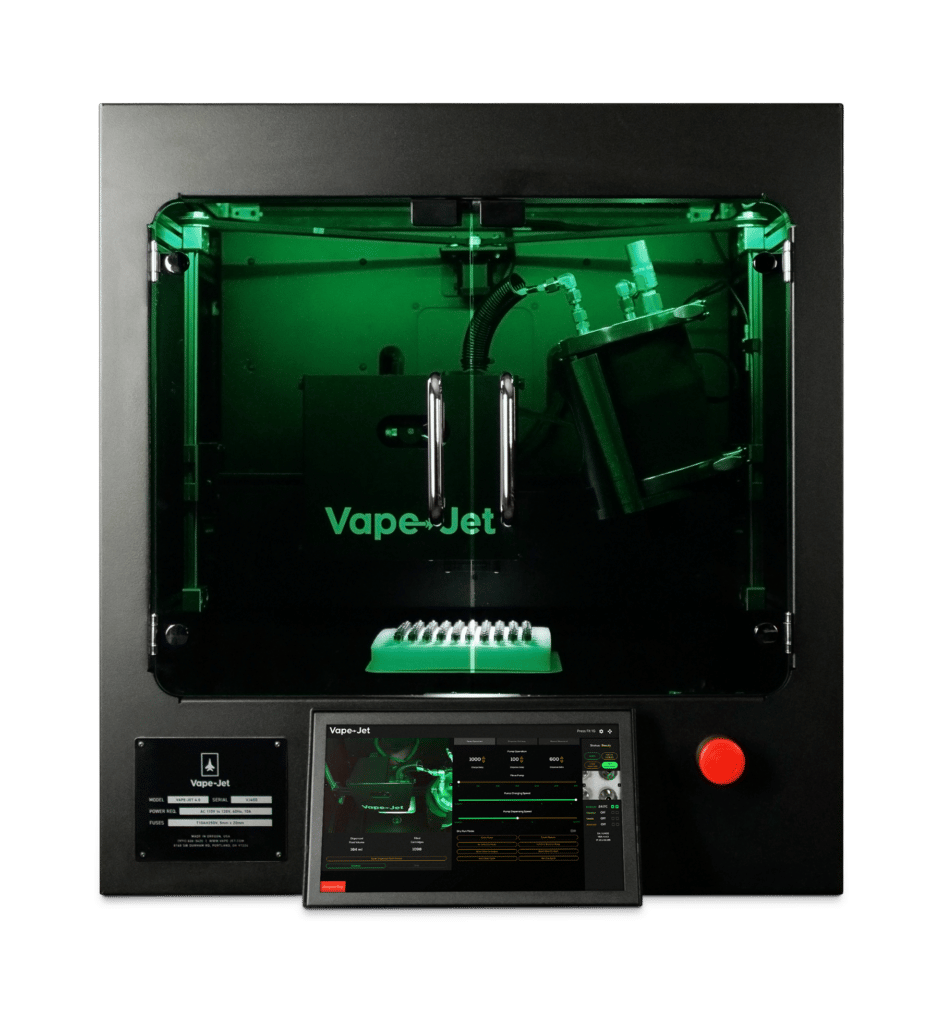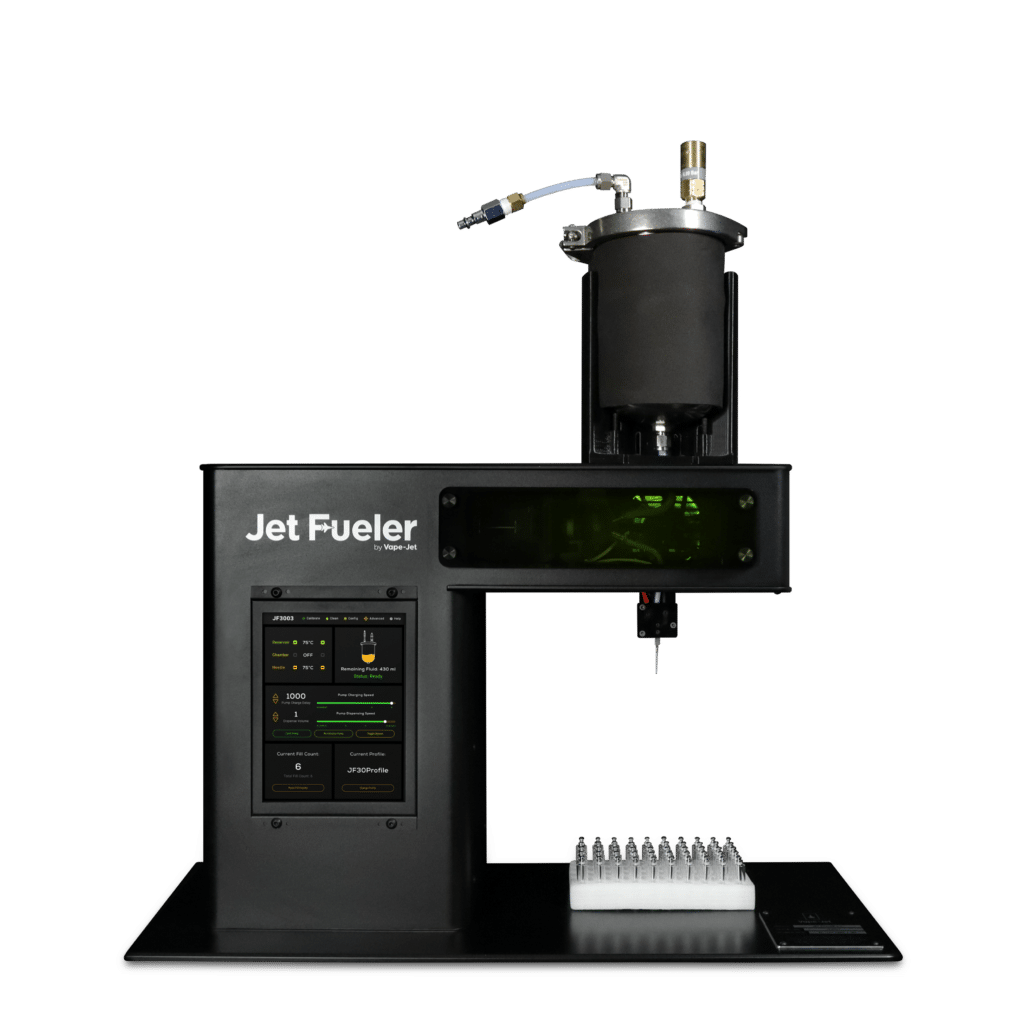It was 2016 when I found myself walking through a cannabis extraction lab. It was my first experience behind the scenes of the nascent legal cannabis industry, and I vividly recall my intense fascination surrounding the inner workings of this new world.
The science and technical aspects of the production process captivated me. The extraction company finished giving me their grand tour, and I’ll admit, I was left in a daze after all that I had seen. Of course, this made them even more proud of what they had accomplished.
However, remembering the purpose for my visit, I rose to my position and asked
“Why are there so many people working on filling these cartridges?”
Aside from the myriad of otherworldly devices that move concentrated liquid from one container to another, I noticed the multitude of workers doing the same monotonous job. Countless individuals were filling cartridges with a cannabis concentrate. Peering at each of them, you could see many different attitudes – some of which were making jokes while others looked entirely frustrated.
It was at that moment that I realized there was a glaring problem with this cannabis extraction facility. It was my job to find inefficiencies – and find them I did. My mind began to race, and I saw clearly that the nascent legal cannabis industry was still experiencing crucial growing pains. How could a multi-billion dollar industry even allow a handful of employees to hand-fill cartridges?
Immediately, I resolved that, as an individual that strives to create efficiency, that automation was the key. Without it, cannabis extraction facilities like this would be left behind as others would implement it.
It was from that moment that automation in the cannabis industry became my primary focal point.
The main idea behind automation is to increase efficiency while reducing manual labor time. Although it sounds simple, many companies in the legal cannabis sector have yet to implement it.
Filling cartridges by hand is highly difficult and incredibly expensive. It costs roughly $31,200 for a yearly employee that makes $15 per hour. Once you add payroll taxes (6.2% for Social Security and 1.45% for Medicare), the total jumps to $33,586.80.
However, compare that to an automated cartridge filler, such as the Vape-Jet, which can fill approximately 4000 carts per day. Compared to an individual using a hand-held filler can reasonably fill just 1000 per day.
Yearly, the Vape-Jet can produce approximately 1,040,000 cartridges. An employee filling cartridges by hand can only complete 260,000 per year. This equates to a per cart cost of $0.002 for the Vape-Jet, versus $0.13 for human labor. That is a $0.12 cost per cart! The number of carts to breakeven here is approximately 250,000, and the return on investment is reached within 65 days.
In the case of the Vape-Jet, scalability is possible as well. A single person could reasonably operate up to 5 Vape-Jet automatic cartridge filling machines at once. Whereas with human labor, the scale is linear. This creates another problem, as many of the current solutions require a single operator working a single machine.
In the case of the Vape-Jet, due to its machine vision technology, the company employing a Vape-Jet can take the foam trays that cartridges are shipped in, and then directly put them on the machine. Other devices use jigs that need to be loaded, requiring human labor to remove each cartridge and put them in the jig. These are then removed from the jig and put back into the foam trays for safe transportation.
As you can see, this method is far less streamlined when compared to the Vape-Jet.

The primary consideration is the cost when deciding on manual labor or automated cartridge fillers.
In some cases, such as small companies, hand-filling is still optimal. However, as a company begins to grow, it’s far better to implement efficient operations sooner rather than later. However, industrial-size cannabis extraction facilities will increase their efficiency exponentially by utilizing an automated cartridge filler, such as the Vape-Jet.
Other key considerations are:
- Quality Assurance and Quality Control: Our auto-cartridge filler can sense if the cartridge is defective.
- Decrease Injury: Repetitive stress from hand filling can occur and does not when utilizing an auto-cartridge filler.
- Reduce Damage to the Product: Hand-held cartridge fillers with high-heat can cause damage to the final product.
- Reduce Down Time: Automated cartridge fillers do not experience downtime due to sickness or holiday.
As the cannabis industry matures, so will the technology that provides the backbone of the production process.
Automation in cartridge filling is the first step towards more efficiency, cost-savings, and quality standards. For more information on automation technology for cartridge filling and the future of automation innovations – drop us a line.















